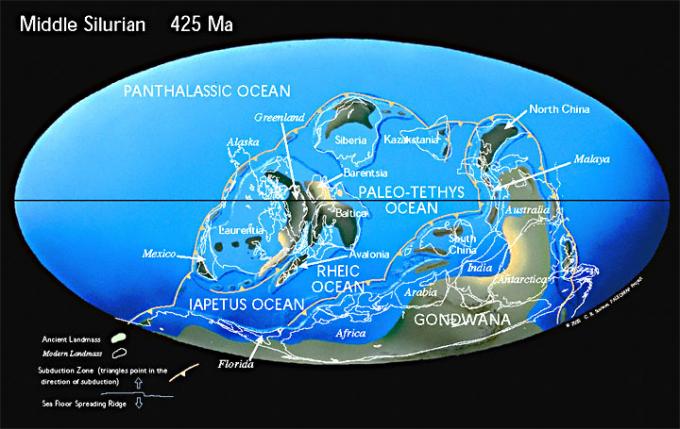Silurian
The Silurian is a geologic period and system that extends from the end of the Ordovician Period, about 443.7 ± 1.5 Mya (million years ago), to the beginning of the Devonian Period, about 416.0 ± 2.8 Mya (ICS, 2004 chart). As with other geologic periods, the rock beds that define the period's start and end are well identified, but the exact dates are uncertain by several million years. The base of the Silurian is set at a major extinction event when 60% of marine species were wiped out. See Ordovician-Silurian extinction events.
A significant evolutionary milestone during the Silurian was the appearance of jawed and bony fish. Life also began to appear on land in the form of small, moss-like, vascular plants which grew beside lakes, streams, and coastlines. However, terrestrial life would not greatly diversify and impact the landscape until the Devonian.
Source: http://en.wikipedia.org/wiki/Silurian | ||
Virtual museum of the Czech Geological Survey, www.geology.cz, (C) Czech Geological Survey, 2011, v.0.99 [13.12.2011]


![[ENG]](img/vlajka-cr.gif) Česky
Česky 
